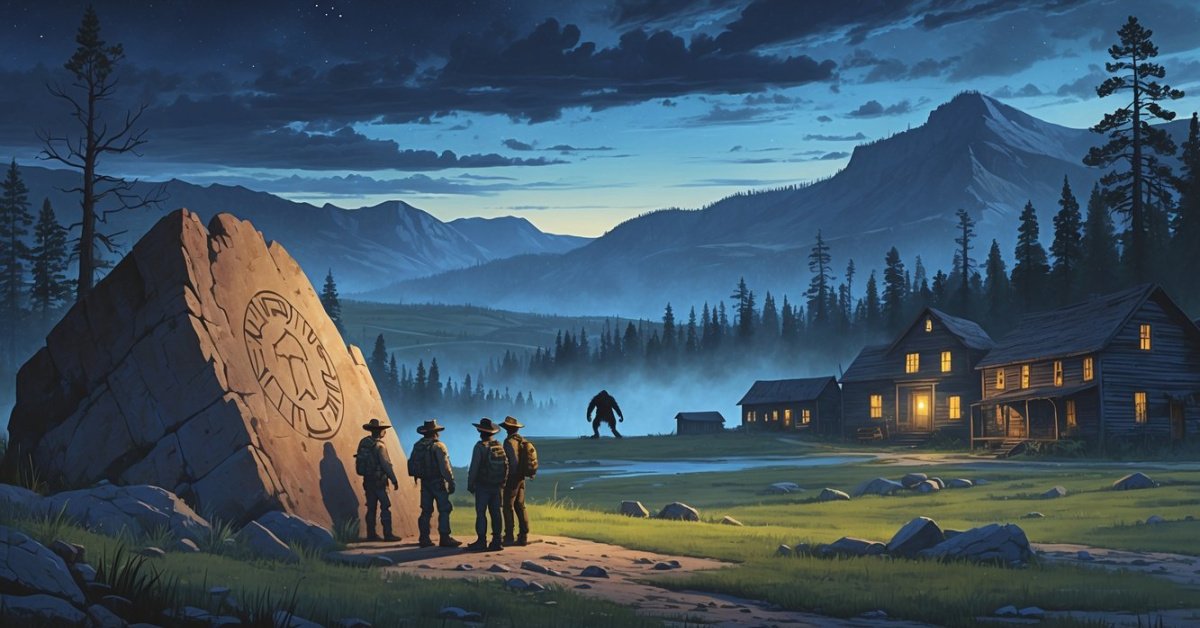Wisconsin is home to more than dairy farms and scenic lakes. The state is packed with stories that have left people puzzled for years.
From unsolved disappearances in quiet towns to strange happenings in the Northwoods, these mysteries have kept experts and regular folks guessing. Some of the biggest historical mysteries in Wisconsin include puzzling cold cases and bizarre events that remain unexplained even today.
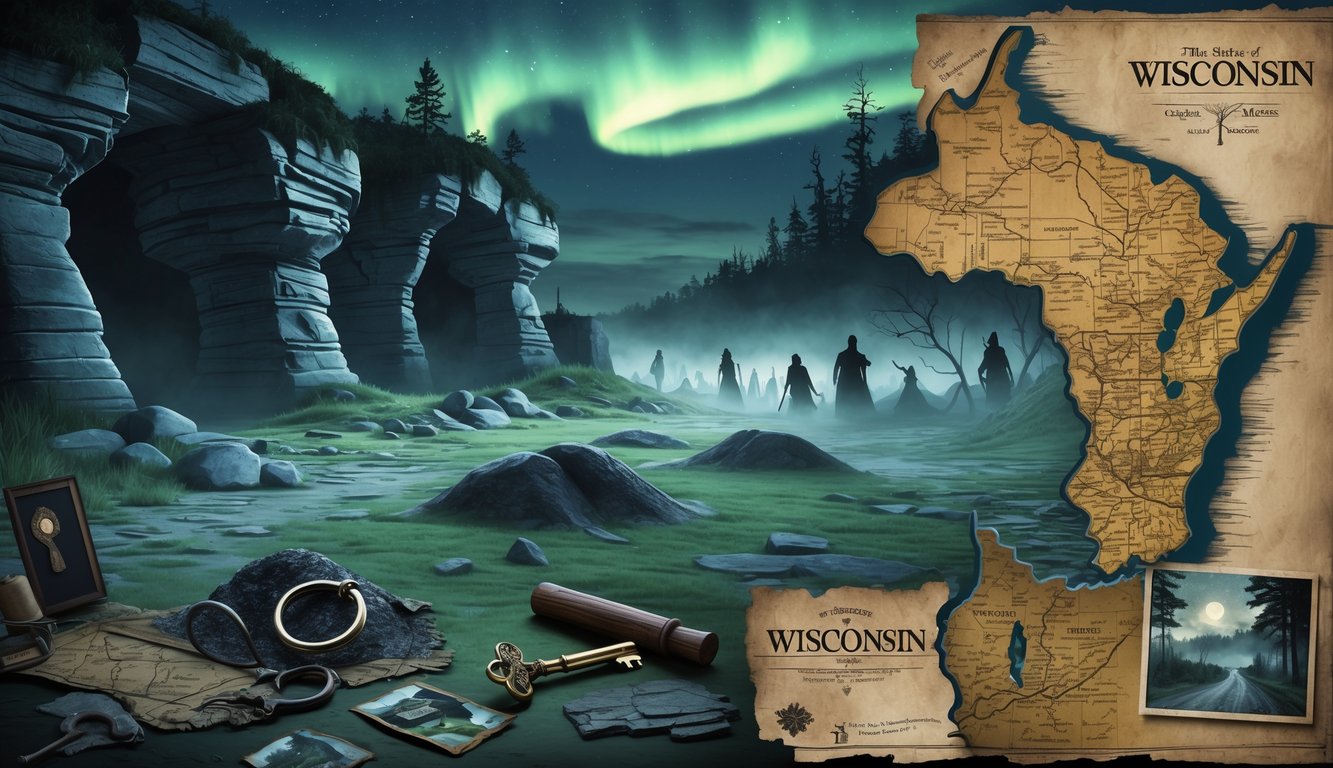
These unsolved stories aren’t just about crimes. There are unexplained phenomena, missing people, and odd discoveries that have never been fully understood.
People from all over the state are still fascinated by these strange tales. Whether they’re reading about cold cases or learning about haunted places, the mysteries continue to draw interest.
Anyone curious about Wisconsin’s mysterious past will find plenty of questions without clear answers. Many turn to lists of unsolved mysteries and cold cases in Wisconsin that keep people wondering what really happened.
Unsolved Murders That Shook Wisconsin
Wisconsin has been the scene of shocking murders and unsolved crimes. Some cases became famous nationwide, while others still puzzle investigators and haunt communities.
The Unsettling Legacy of Ed Gein
Ed Gein, also known as the “Butcher of Plainfield,” committed horrifying acts in the late 1950s. He lived in Plainfield, Wisconsin, and inspired characters in movies such as “Psycho” and “The Texas Chainsaw Massacre.”
Gein’s crimes included grave robbing and murder. Police found disturbing household items made from human remains in his farmhouse.
Law enforcement found body parts from multiple victims. Only two murders were officially linked to him: Mary Hogan and Bernice Worden.
Gein was declared insane and spent his life in a mental hospital. Some believe more unsolved murders may have been connected to him, but police never found evidence.
The Infamous Milwaukee Cannibal: Jeffrey Dahmer
Jeffrey Dahmer, sometimes called the Milwaukee Cannibal, committed some of the most gruesome crimes in American history. Between 1978 and 1991, Dahmer murdered at least 17 young men and boys in Milwaukee.
His crimes included killing, mutilating, and eating parts of his victims. Police uncovered horrifying evidence in his apartment after a potential victim escaped and alerted officers.
The case shocked the world and raised serious questions about missed warning signs and gaps in the justice system. The murders were solved, but the scale of the crimes and the failures of law enforcement still haunt Milwaukee today.
Walter Ellis and the North Side Strangler Case
Walter Ellis, known as the North Side Strangler, targeted women in Milwaukee from 1986 to 2007. Police struggled for years to solve the murders, as many of the victims were found in similar ways.
They finally caught Ellis through DNA evidence that tied him to at least nine homicides. For over twenty years, the murders in central Milwaukee remained unexplained, causing worry and fear.
Law enforcement faced criticism for not solving the case sooner. Ellis was convicted in 2011, but the long gap before his identification shows how difficult it can be to solve serial killings.
Other Notorious Wisconsin Homicides
Wisconsin has many other notable unsolved murders and disappearances. Cases such as the unsolved murder of William Clapp (1993), Kenneth Juedes (2006), and the mysterious disappearances of Laurie Depies (1992) and Kayla Berg (2009) have left families looking for answers.
Law enforcement agencies still re-examine files and chase new leads in these cases. Communities remember these crimes, hoping that justice will be served one day.
You can learn more about Wisconsin’s unsolved murders and disappearances that continue to puzzle both police and residents.
High-Profile Missing Persons Mysteries
Several missing persons cases in Wisconsin have drawn wide public attention. The stories of Laurie Depies, Amber Wilde, Kayla Berg, and Betty Rolf remain unsolved, leaving families and communities searching for answers.
Laurie Depies: Vanished Without a Trace
Laurie Depies disappeared on August 19, 1992, from a parking lot in Menasha, Wisconsin. She was 20 years old, arriving at her boyfriend’s apartment but never making it inside.
Her car was found in the lot, undisturbed, with her belongings inside. Police and volunteers searched the area for days, but no physical evidence led to a suspect or provided any clear explanation.
Over the years, tips and reported sightings turned up, but nothing definitive. Laurie’s case is still featured on Wisconsin cold case lists.
Her family continues to hope for closure, but after decades, the case remains one of Wisconsin’s most puzzling missing persons mysteries.
Amber Wilde: The Disappearance Still Haunting Green Bay
Amber Wilde was seen last on September 23, 1998, in Green Bay, Wisconsin. She was a 19-year-old college student, four months pregnant at the time of her disappearance.
Her car was found abandoned days later, with her keys and cell phone inside. Police focused on those close to Amber, but there was no direct evidence linking anyone to her going missing.
Reports suggest she might have argued with someone before vanishing. To this day, nobody has been charged.
The investigation remains open, and Wisconsin authorities still ask the public for clues that could help solve Amber’s case.
Kayla Berg: A Small Town’s Ongoing Nightmare
Kayla Berg disappeared from the small town of Antigo in Central Wisconsin on August 11, 2009. She was just 15, last seen when a friend reportedly dropped her off at a house, but no one ever saw her again.
Despite intense searches around Antigo and interviews with friends, family, and neighbors, few solid leads have emerged. Over the years, there have been rumors, reported sightings, and even a disturbing viral video, but nothing has led to Kayla.
Her case still grips the small community. Kayla’s story frequently appears in Wisconsin missing persons case discussions.
Betty Rolf and the Fond Du Lac County Mystery
Betty Rolf was a 20-year-old woman from Fond Du Lac County who vanished in 1977. She was last seen around her workplace, leaving behind no obvious signs of foul play.
Police found no clues about her whereabouts, and the area’s rural nature made searches difficult. Her family continued to ask for information for years.
The case drew renewed interest whenever there were similar disappearances in the county. Betty’s fate has never been explained.
Her name is still remembered in lists of unsolved Fond Du Lac County cases. Even small towns face lasting mysteries.
Infamous Unsolved Cases and True Crime Legends
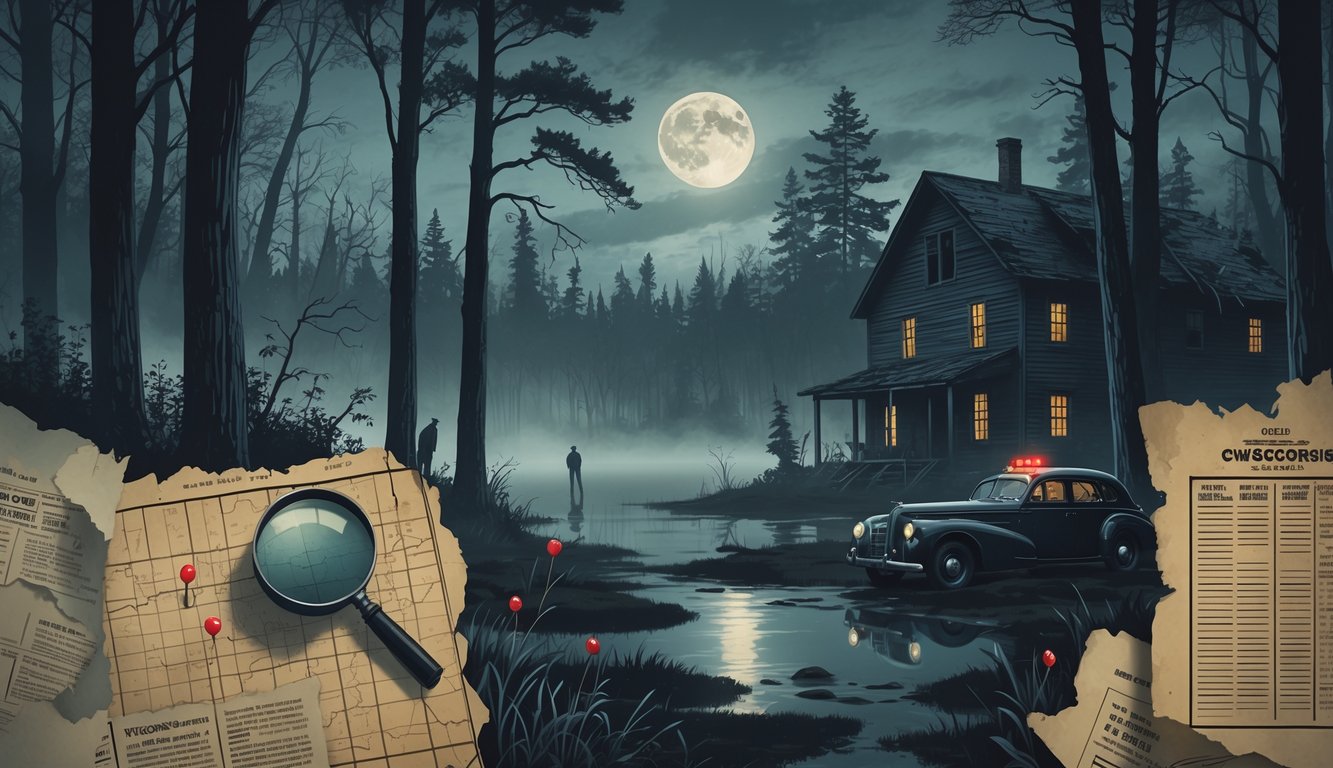
Wisconsin has seen several unsolved cases that have left families and communities searching for answers. Some true crime stories from the state remain discussed today for their mystery and the impact they had on people’s lives.
Appleton’s Jane Doe: The Quest for Identity
Appleton’s Jane Doe is one of Wisconsin’s most well-known unidentified cases. In 1985, police found the remains of a young woman near a highway outside the city.
Her identity was never learned. Key details about Jane Doe include dental work that suggested recent and possibly expensive treatment and clothing that may have come from other regions.
She was believed to be in her late teens or early twenties. The case has led to hundreds of tips, but no matches.
Efforts over the years have included facial reconstructions, national missing persons databases, and even DNA analysis. Each attempt brought hope but no closure for investigators and community members.
The case remains active on missing and murdered lists. Her story is highlighted in Wisconsin cold cases.
The Persistent Mystery of Moraine
Near the Kettle Moraine area, several unsolved crimes have taken place over the decades. One of the most puzzling is the disappearance of a young camper during the 1970s.
She went missing without a trace. Despite searches by police, volunteers, and family, no evidence pointed to where she went.
Locals still talk about the strange events surrounding the case. Reports described suspicious vehicles and people who acted out of place around the time she vanished.
None of these leads led to an arrest or provided helpful clues. The Kettle Moraine mystery remains a painful subject for those who knew the camper.
This case stands as a haunting example from the state’s collection of unsolved cases.
Madison Mysteries: Murders Without Closure
Madison, Wisconsin has also had its share of unsolved murders. In the 1980s and 1990s, several cases gained attention when police could not find the suspects or motives behind the crimes.
These cases included both high-profile killings and less-publicized deaths. Common threads in many of these cases are lack of evidence and missing witnesses.
The victims’ families continue to hope for new information. Many mysteries still sit open in police files.
Investigators and true crime enthusiasts often revisit these “murders without closure.” The stories from Madison stand as a reminder that not all cases end with justice or answers.
They remain a focus in Wisconsin true crime history.
Wisconsin Cold Cases: The Ongoing Investigations
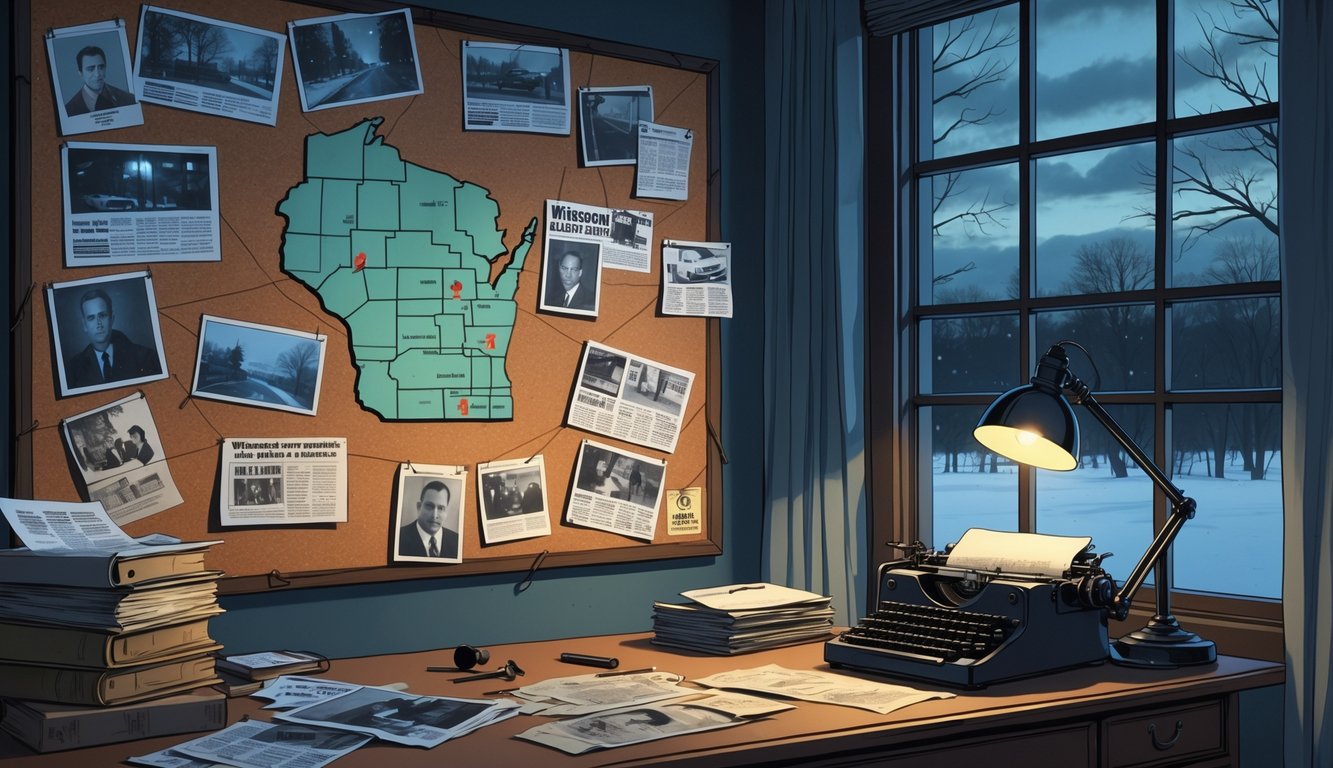
Wisconsin has many unsolved crimes that continue to affect victims’ families and communities. Some cases stay cold for decades but benefit from new technology, fresh evidence, and changing police strategies.
Cold Cases Reopened with New Evidence
Old evidence in Wisconsin cold cases sometimes gets a second look thanks to advances in forensic science. New DNA testing can reveal matches that police missed years ago.
For example, evidence collected from crime scenes in the 1980s or 1990s can now be tested with modern tools to find new leads. Some reopened investigations use fingerprints or other samples that were once too small or degraded to analyze.
This has helped identify suspects or rule out false leads. Families and communities often hope that fresh reviews of evidence will finally bring answers.
A public database tracks many of Wisconsin’s unsolved murders and missing persons cases. The public and detectives can re-examine facts and share tips.
Investigators sometimes find that someone who knew the victim can now provide more information. This helps solve cases that once seemed impossible.
The Role of Genetic Genealogy in Solving Cold Cases
Genetic genealogy is a newer method that has had a big impact on solving cold cases across the country, including in Wisconsin. This process uses DNA from crime scenes and matches it to likely family members who have submitted their DNA to public databases.
By building out family trees, detectives can narrow down suspects even when there are no direct matches. This has helped identify unknown suspects in unsolved murders and missing persons cases.
Some of Wisconsin’s toughest mysteries have seen breakthroughs because of this approach. The use of genetic genealogy allows law enforcement to solve crimes that, until recently, had no suspects or very few clues.
It’s become an important tool in bringing justice for victims and their families.
Law Enforcement’s Changing Tactics
Law enforcement across Wisconsin has changed how they investigate cold cases. Today, police use specialized cold case teams who focus only on unsolved crimes.
Officers now work more closely with crime labs to test old evidence using the latest methods. There is also greater cooperation among different police agencies, allowing them to share details and match patterns between cases in different areas.
Police look at every angle, from witness interviews to social media investigations. Lists of cold or unsolved cases are often available to the public, which allows communities to help by providing tips or sharing information.
The Role of Chicago and Surrounding Regions

Chicago and nearby areas have shaped some of Wisconsin’s most puzzling events. Cross-border connections and influence from Chicago often played a role in unsolved crimes and mysterious happenings.
Cross-Border Crime Connections
Many infamous unsolved crimes in Wisconsin connect back to links with Chicago and border towns. During the early to mid-20th century, organized crime was common in Chicago, and criminals sometimes crossed into Wisconsin to avoid police or commit more crimes.
These connections made it harder for law enforcement to solve crimes. Different states had different laws and police forces, which sometimes led to confusion or lack of cooperation.
Some missing persons cases in Wisconsin were later tied to crime networks based in Chicago. Notable incidents include bank robberies, bootlegging, and unsolved murder cases where suspects slipped across state lines.
The Influence of Chicago on Wisconsin Mysteries
Chicago’s reach went beyond just crime. Its culture, population growth, and economic power also shaped events and stories in Wisconsin.
At one point, the area now called Chicago was almost a part of Wisconsin territory. From the 1800s forward, Chicago’s role as a transportation and crime hub influenced nearby Wisconsin towns.
Railroads, highways, and waterways created easier access for people—both honest and criminal—to enter Wisconsin. Some of Wisconsin’s most famous mysteries, like disappearances and bank heists, have clues pointing back to contacts or influences from Chicago.
Law Enforcement and the Pursuit of Justice
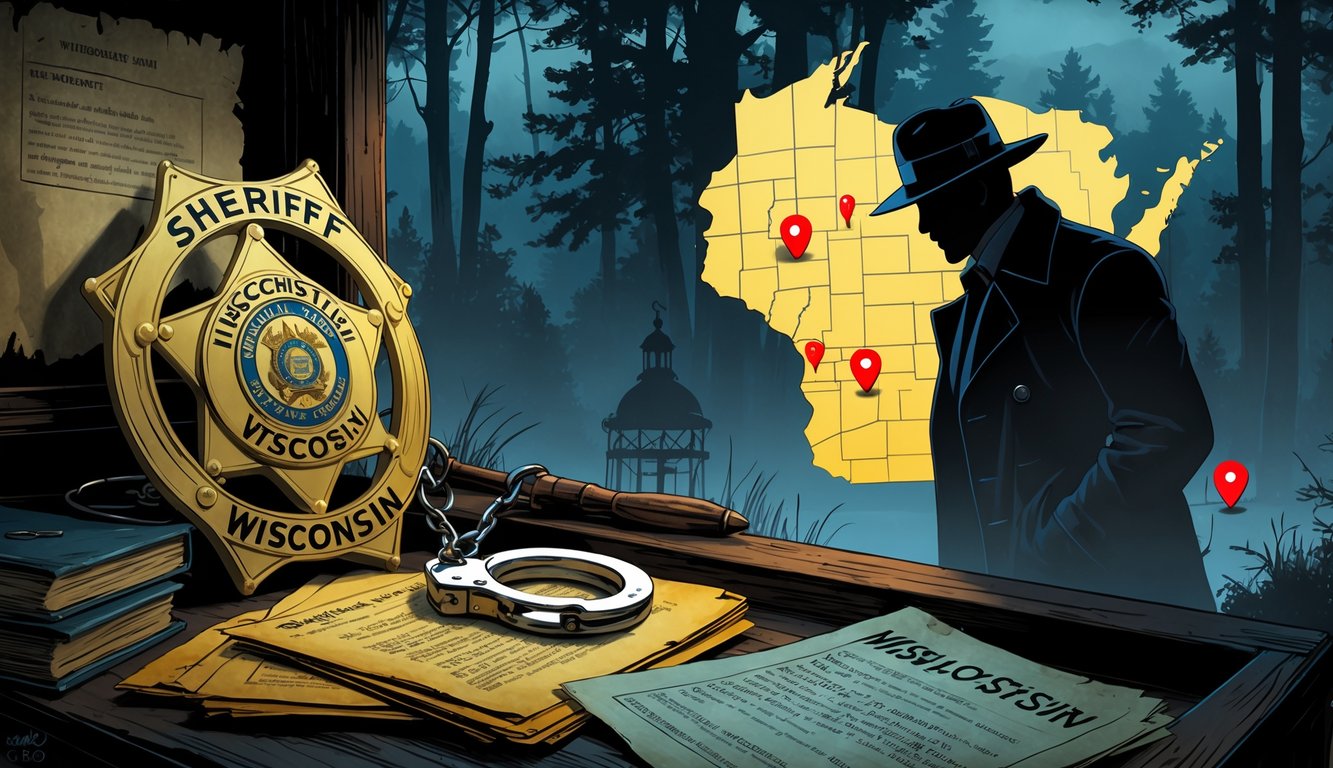
Law enforcement agencies across Wisconsin have worked for decades to tackle tough mysteries. Progress often depends on strong leadership, dedicated local officers, and teamwork between counties.
Police Chiefs Who Challenged the Status Quo
Several chiefs of police in Wisconsin became known for changing how cases are investigated. Some police chiefs pushed for new forensic methods or open communication with the public to bring more attention to cold cases.
By supporting advanced DNA testing, they helped spark fresh leads in cases that had seemed unsolvable for years. Chiefs who review old evidence and listen to tips from the community have made a measurable impact.
For example, some chiefs have openly asked for help from outside experts. Others have launched task forces that focus only on unsolved cases, making sure these mysteries are not forgotten.
The Importance of Local Police Officers
Local police officers play a central role in the search for justice. They collect evidence, talk to witnesses, and stay connected with the community.
Since they know their towns and neighborhoods so well, they can spot details that might go unnoticed by outsiders. Officers in Wisconsin often continue to work on cold cases for years.
They comfort families, follow up on leads, and help keep missing persons and victims’ stories alive. Sometimes, officers also partner with groups like the Wisconsin Cold Case Initiative to bring in fresh perspectives and help raise public awareness.
Collaboration Between Counties
Big mysteries rarely stay within one city. Law enforcement agencies across different counties in Wisconsin often need to cooperate to solve the toughest cases.
Sharing information, technology, and resources allows them to link evidence and spot patterns that one agency might miss. Sometimes counties form joint task forces, especially for cases that cross jurisdiction lines.
These teams can pool their expertise and look at cases from many angles. Collaboration has already helped solve several cold cases by connecting clues from various police departments.
In recent years, teamwork between counties has grown stronger as data sharing and regular meetings have become more common. Families of victims appreciate when law enforcement works together, as it increases the chances of finally achieving justice for historical mysteries.
Unsolved Homicides with Possible Foul Play
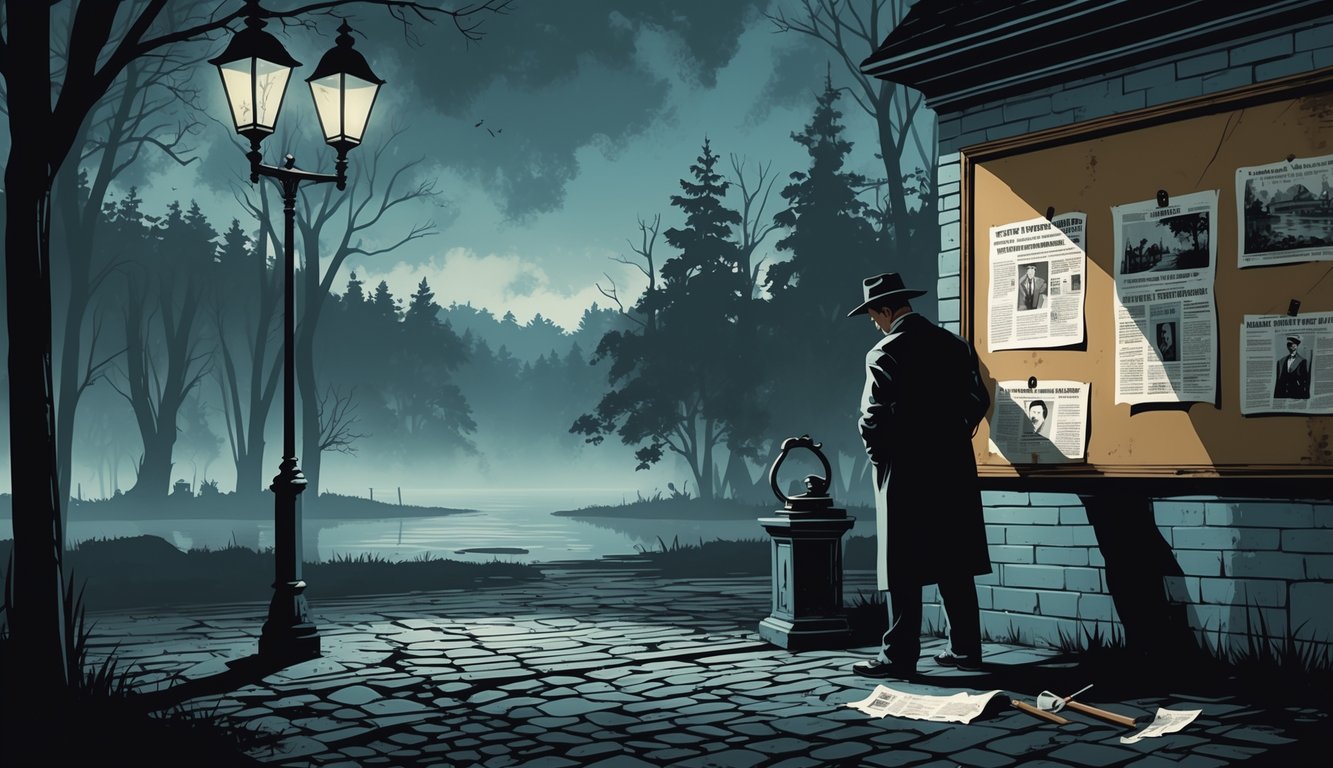
Many of Wisconsin’s biggest historical mysteries involve unsolved homicides and cases where foul play is strongly suspected. Despite advances in technology and investigative methods, some crimes remain open for decades.
Clues Overlooked in Notorious Cases
Certain unsolved homicides have left people asking whether important clues were missed. In some well-known Wisconsin cases, such as those in Fond du Lac and Kewaunee counties, the trail has gone cold for many years.
Sometimes, investigators miss key evidence or lose it early in the investigation. Old crime scenes often lacked the security and forensic practices used today.
For example, investigators in the 1960s and 1970s might not have collected DNA, which is now vital for solving cases. Witness statements have sometimes changed over time, making it harder to understand what really happened.
Families and detectives often wonder if earlier misunderstandings kept the truth hidden. For a helpful overview of high-profile unsolved murders in Wisconsin—including details about suspicious deaths and possible oversight—visit this list of unsolved murders and cold cases from across Wisconsin.
The Complexities of Investigating Homicides
Investigating unsolved homicides, especially when foul play is involved, can be extremely challenging. Different police agencies across Wisconsin face hurdles like limited resources and new evidence surfacing years later.
Jurisdictional issues can slow down investigations. When crimes happen near county lines or involve missing persons who move between communities, sharing information gets complicated.
Cold cases often go years without new leads. Modern technology can help, but only if old evidence was preserved.
Sometimes, families need to keep pushing for answers, even as time passes. For more on how hundreds of unsolved homicides and disappearances are investigated in both rural and urban parts of Wisconsin, this guide covers what makes each case unique.
Impact on Wisconsin Communities
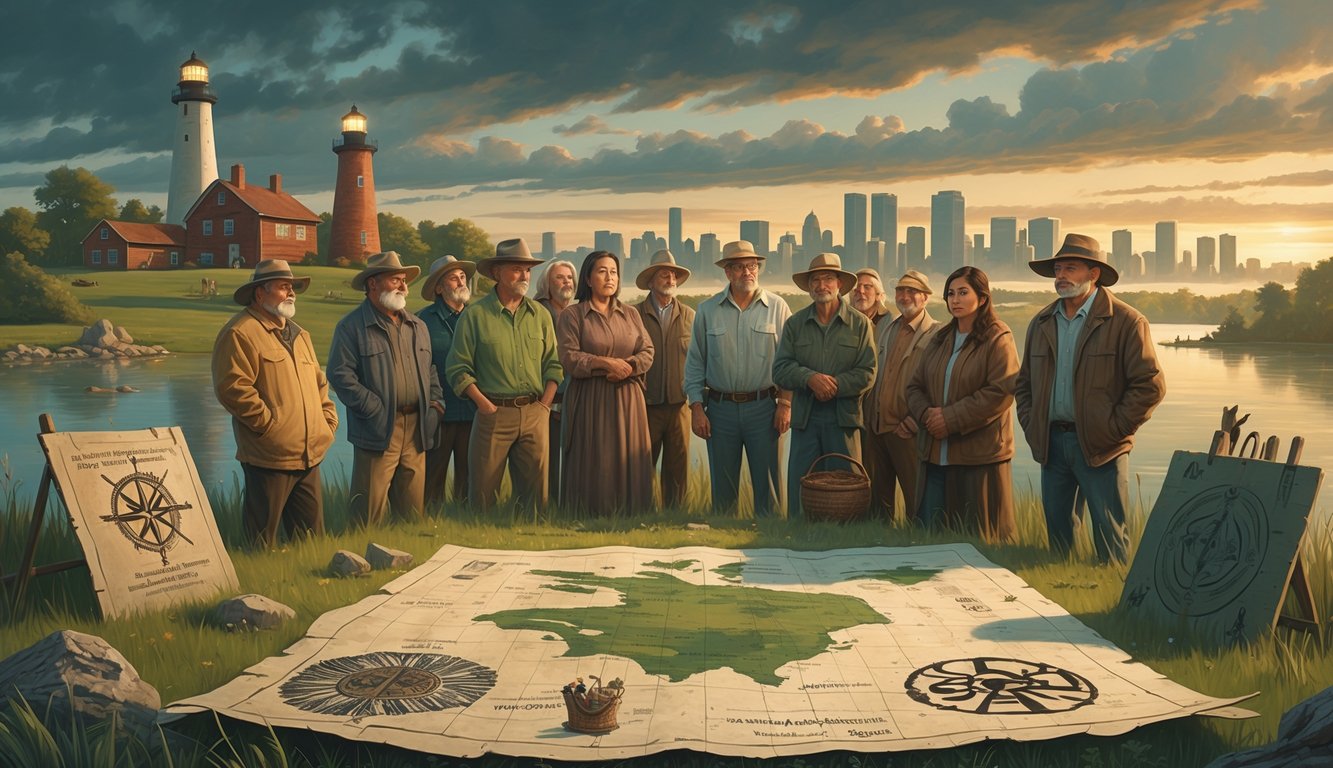
Unsolved mysteries and cold cases leave a lasting mark on people living in Wisconsin towns and cities. The search for closure often brings together neighbors and affects the way people see their communities.
How Cold Cases Shape Local Memory
Cold cases leave families and friends with unanswered questions. This can feel especially hard in close-knit places like Appleton, where everyone knows each other.
Stories of missing people or unsolved crimes often become part of local history. Communities sometimes hold memorials or moments of silence for those lost.
These gatherings keep the memories alive. In central Wisconsin, old mysteries may be shared at community events or even in school projects.
Everyone wants answers, but the unknown can also create fear or distrust. Old unsolved crimes often get passed down as stories.
Kids grow up hearing about them, and certain locations—even empty buildings or woods—can gain a reputation. Yet, sharing these stories helps bond people and can inspire future efforts to seek answers.
Grassroots Efforts for Answers
When official investigations stall, local families and volunteers often step up. People organize search parties, make flyers, or start websites and social media groups to gather tips.
In Appleton and central Wisconsin, there have even been fundraisers to hire private investigators. Community members sometimes hold forums or public meetings so new information can come to light.
Lists and tables of missing persons or suspects get updated and shared by locals, not just police. Sometimes, these efforts help law enforcement notice new clues.
By working together, residents show how important closure is to them. Grassroots efforts have helped keep many cases in the public eye.
People refuse to forget, making sure hope remains alive and that those lost are remembered with respect.
Modern Techniques Transforming Investigations
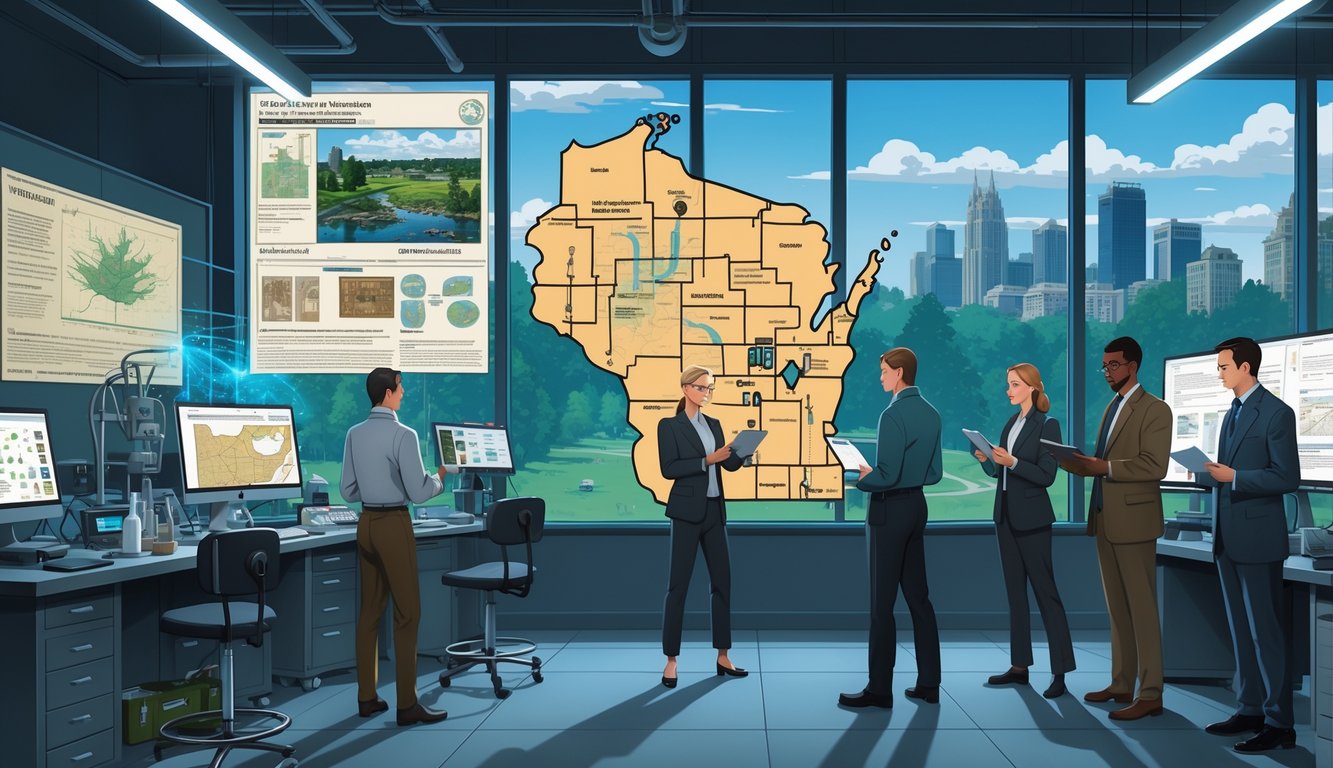
New technology is helping investigators solve cold cases that were stuck for years. Better science and digital tools mean detectives can examine evidence more closely and connect with the public in new ways.
Forensics and Advancements in Evidence Analysis
Forensics has come a long way. DNA testing can now work with tiny, old samples, giving new hope for cases that have sat unsolved for decades.
Techniques like genetic genealogy let experts compare crime scene DNA with public databases to track down possible suspects or identify victims. Experts also use advanced fingerprint analysis and chemical tests to study hair, fibers, and even soil found at crime scenes.
These methods can link a person to a location or object more reliably than before. Digital tools analyze images, video, and phone data, piecing together events in ways that were not possible years ago.
Wisconsin investigators, like those featured in stories about cold cases in the state, use these modern forensic methods to review and sometimes re-open investigations.
Media and Community Involvement
The internet and social media make it much easier to share information fast. Police can post details about unsolved cases, missing persons, or evidence, reaching thousands of people in just a few hours.
Sometimes, tips from the public break open a case that has been cold for a long time. Local news outlets and websites often highlight unsolved crimes.
This raises awareness and encourages people to come forward with what they know. Victims’ families use online platforms to keep attention on their loved ones and tell their stories.
High-tech training and collaboration events in Wisconsin, like the ones described here, bring together experts who share tips, tools, and new approaches.
The Drive for Closure: Families and Advocacy
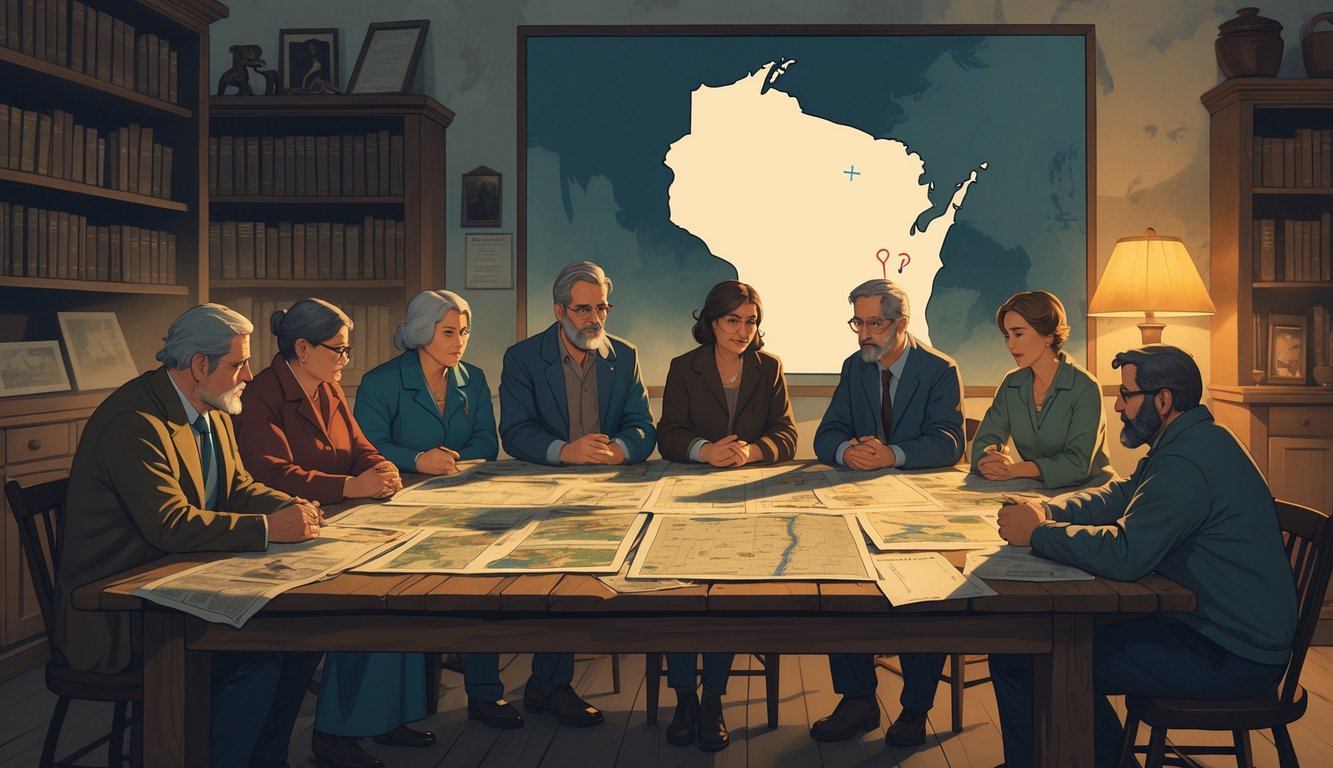
Families affected by missing persons and unsolved crimes in Wisconsin face many challenges. Ongoing support and strong advocacy groups play a key role in their journey for answers and closure.
Supporting Families of the Missing and Murdered
When a loved one goes missing or is lost to an unsolved crime, families often feel isolated and powerless. Many spend years searching for information, organizing events, and putting up posters.
Each effort is a way to keep their cases active and in the public eye. Strong emotional support systems become crucial.
Families lean on each other and also receive help from local communities. Candlelight vigils, support groups, and counseling services are common ways people gather to share their hope and pain.
Often, one of the hardest parts is not knowing what happened. The pursuit of closure motivates families; even learning painful truths can help them begin to heal.
Sometimes, breakthroughs come when someone finally comes forward with crucial information, as shown in Wisconsin’s area cold case mysteries.
The Role of Advocacy Groups in Wisconsin
Advocacy groups in Wisconsin work tirelessly to help families get answers. Organizations like Project Cold Case and state-based initiatives connect families with resources, legal guidance, and emotional support.
These groups raise public awareness of unsolved crimes and missing persons. They organize events like memorial walks, educational seminars, and media campaigns to keep cases visible.
Sometimes their work helps re-open cold cases when new leads or public tips appear. Advocacy efforts also push for better laws and funding.
Groups have helped pass important legislation to improve how missing persons cases are handled. They work with police and detectives to share information and keep searches active.
Families, advocates, and investigators form partnerships that help those seeking closure.


